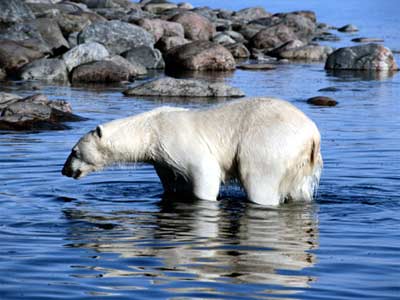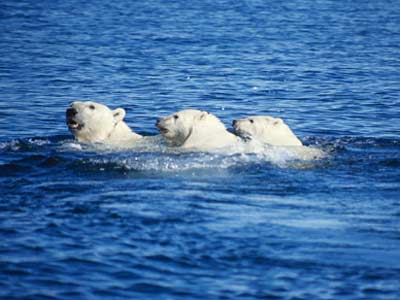TODAY’S MOOD POLAR BEAR POLAR BEAR URSUS MARITIMUS LIFE
1 FUEL MOISTURE SITE DESCRIPTION FORM 1 TODAY’S2 TODAY’S SCRIPTURE MATT 262656 WE ARE MADE WILLING
ABDULLAH AYASUN (TODAY’S ZAMAN GAZETESI) – POLISLER TARAFINDAN YÜZÜNE
ADULT HISTORY FORM TODAY’S DATE EMAIL ADDRESS LAST
ALL ABOUT ME CHILD’S NAME ……………… AGE ……………… TODAY’S
Bariatric Solutions Insurance Verification Form Today’s Date pt
Today’s
MOOD: Polar
Bear Polar
bear Life
span Statistics Physical
Description Distribution Habitat Diet Behavior Reproduction Conservation
status Notes Polar
bears evolved from brown bears about 200,000 years ago. Fossil
remains of a large extinct subspecies (U.m.tyrannicus)
were excavated at a site near London in 1964. Polar
bears are the most likely species to kill humans for food, as they
assume anything they encounter is potential prey. Attacks by other
bear species are usually due to the bear being startled, and they
will rarely eat the body. ______________________________________________________________________________________________________________________ Marine
Biology – Mr. Micciche Today’s
Date:
Question:
How
do polar bear cubs learn to hunt? ____________________________________________________________________________________



Ursus
maritimus
They
live for up to 25 years.
Body
length is 240-260cm (males) and 190-210cm (females). Males weigh
400-600kg (and on rare occasions up to 800kg), females weigh
200-300kg. They are the largest species of bear and the largest land
carnivore.
Polar
bears are large and stocky with hind limbs that are longer than the
forelimbs. They have a long neck. They have large, furry feet that
act as snowshoes. Their creamy-white fur is dense and
water-repellent, enabling them to shake dry after swimming.
Polar
bears are found throughout the circumpolar Arctic and south to
Canada.
They
spend most of their time on Arctic ice floes. When they are on shore
they remain near water.
Polar
bears are predominantly carnivorous. They feed mainly on ringed
seals and less on bearded seals. A small part of their diet includes
beluga, narwhal, walrus, fish, seabirds, reindeer and carrion. They
also eat berries and various other vegetation. The main technique
employed by polar bears when hunting seals is known as
'still-hunting'. The bear waits at a breathing hole until a seal
surfaces. It will then break through the snow and seize the seal
with its jaws. Polar bears must spend over 50 percent of their time
hunting, and less than two percent of attempts to catch seals are
successful. Even in good hunting areas, a bear may catch only one
seal every 4-5 days.
They
are usually solitary, except during the breeding season (midsummer),
although they will sometimes aggregate to feed on large whale
carcasses. Polar bears are most active at night. They are strong
swimmers and have many adaptations for an aquatic environment - they
are well insulated with fat, their nostrils close and their ears are
held close to their head when underwater, plus their feet are
partially webbed. Annual home ranges vary from 5,180-300,400 square
km. The variation depends on their location - bears that live in
areas where the pack ice changes considerably need larger ranges
than those in relatively stable habitats. Only pregnant females
enter dens over the winter, so that their cubs can be born in
safety. Other polar bears remain active.
Polar
bears mate between March and June and give birth to 1-3 cubs (very
rarely 4) from November to January. The cubs are born blind and
helpless with a thin layer of fur.
They
are classified as 'Lower Risk - Conservation Dependent' by the IUCN
and are on the CITES (Convention on International Trade in
Endangered Species) appendix II. They are hunted for meat and fur.
Oil spills from drilling platforms or tankers are a potential
threat.
They
have a remarkable sense of smell.
BENEDICTINE VALUES FOR TODAY’S COMMUNITIES PEACE COMMUNITY STABILITY COMPASSION
CLASS DATE MAY 1 5 TODAY’S THEME
CLINIC CANCELLATION REQUEST RESIDENT’S NAME TODAY’S DATE DATE REQUESTED
Tags: polar bear, do polar, polar, today’s, maritimus, ursus
- THE COLUMBIA BUSINESS SCHOOL AND LONDON BUSINESS SCHOOL SCHOLARSHIP
- ESPECIFICACIONES TÉCNICAS ANEXOS RDEP CONSIDERACIONES GENERALES EN LA PRESENTE
- PLANTILLA DE LA DESCRIPCIÓN 1 MANTENER SIEMPRE LOS TÍTULOS
- NAME DATE PERIOD VOCABULARY EXPLOSIONS CHAPTER
- ORDINANCE NO9832 (NEW SERIES) AN ORDINANCE ADDING SECTION 89305
- SHAKESPEARE QUIZ ANSWERS TO THE QUESTIONS VALUE QUESTIONS
- S ACRED HEART & OUR LADY QUEEN OF THE
- SOPA DE PIEDRA N ARRADOR HACE MUCHOS AÑOS LLEGARON
- REGISTRATION FOR RESALE OR DEALING AND TRADING ORS 59035(9)
- LPPD DINAS KEARSIPAN DAN PERPUSTAAKAAN KOTA JAMBI 2019 RECTANGLE
- „MUSIQQ” + „MC ORĶESTRIS” TEHNISKO VAJADZĪBU SARAKSTS GRUPAS SASTĀVS
- REGISTAR IZDANIH CERTIFIKATA OBOZP0101 IZDANJE01 REVIZIJA01 DATUM01022020 STRANICA 66
- LENGUAJES ARTÍSTICOS IUNA 2014 TURNO TARDE GUÍA DE LECTURA
- WWWRIDROMUCLMES ABRIL 2014 WWWRIDROMUCLMES ISSN 19891970 RIDROMUCLMES DERECHO
- HASAN RIAZ COMSATS INSTITUTE OF INFORMATION TECHNOLOGY COMSATS ROAD
- DISCURSO DEL SECRETARIO GENERAL AI DE LA CAN ADALID
- 71 INFORMES DICTÀMENS I RECONEIXEMENTS INICI FASE D’EXECUCIÓ FINAL
- VEICOLI DESTINATI ALLA DEMOLIZIONE E DEPOSITO TEMPORANEO IL VEICOLO
- THINK LIKE A ROCKET SCIENTIST! ROCKET PROJECT STUDENT
- CELL SIGNALING AND CANCER ANSWER TO QUESTIONS CELL SIGNALING
- PATIENT 5 C20402AG PATIENT 8 C2302+5GA PATIENT 9 C2039+1GT
- OSNOVNE DOS KOMANDE DIRIZLISTAVANJE DIREKTORIJUMA CD IME DIREKTORIJUMAPRELAZAK U
- ORDENANÇA FISCAL NÚMERO 7 ANY 2022 ORDENANÇA FISCAL REGULADORA
- 7 REPUBLIKA POŁUDNIOWEJ AFRYKI PROSIMY O UZUPEŁNIENIE ODRĘBNEGO KWESTIONARIUSZA
- TEMA 1 QUÍMICA DESCRIPTIVA EJERCICIOS DE SELECTIVIDAD 9697 1
- ETHEKWINI ELECTRICITY MVLV OPERATIONS APPLICATION FOR THE CONNECTION OF
- TUTORIAL POSSIBLE WAVE FUNCTIONS FOR SYSTEMS WITH A SINGLE
- MIEJSKIE PRZEDSIĘBIORSTWO ENERGETYKI CIEPLNEJ RZESZÓW SP Z OO
- OSIĄGNIĘCIA UCZNIÓW MSP W ROKU SZKOLNYM 20082009 KONKURSY POWIATOWE
- TABLICA 1 TOLERANTNE VRIJEDNOSTI (CILJNE VRIJEDNOSTI) ZA OZON CILJ
NUMBER AS91019 VERSION 2 PAGE 2 OF 2 ACHIEVEMENT
XX ANIVERSARIO UNIDAD DE CUIDADOS INTENSIVOS PEDIÁTRICOS DEL HOSPITAL
LEY F Nº 2381 EDUCACIÓN Y CULTURA CONMEMORACIONES JORNADA
 LEY ARANCELARIA PARA EL COBRO DE HONORARIOS PROFESIONALES DE
LEY ARANCELARIA PARA EL COBRO DE HONORARIOS PROFESIONALES DE COLECTIVO DE OSC’S POR LA INICIATIVA CIUDADANA MATRIMONIO ENTRE
COLECTIVO DE OSC’S POR LA INICIATIVA CIUDADANA MATRIMONIO ENTRENUMERY RACHUNKÓW BANKOWYCH NA KTÓRE NALEŻY WPŁACAĆ OPŁATY SKARBOWE
PROGRAM SZKOLENIA SPECJALIZACYJNEGO DZIEDZINA NR 17 (EPIZOOTIOLOGIA I ADMINISTRACJA
PERSONAL NUTRITION ANALYSIS ENERGY CALCULATOR DAILY CALCULATOR CALCULATE
 FIEL A SU COMPROMISO CON LOS MENORES EN SITUACIÓN
FIEL A SU COMPROMISO CON LOS MENORES EN SITUACIÓNEL LEÓN CON SU EJÉRCITO UN DÍA EL
 3 KEJAKSAAN NEGERI BALIKPAPAN P29 KALIMANTAN TIMUR “UNTUK KEADILAN”
3 KEJAKSAAN NEGERI BALIKPAPAN P29 KALIMANTAN TIMUR “UNTUK KEADILAN”VOCABULARIO 1 MOZO A EN TEXTO “ACUDIERON TAMBIÉN LOS
KEY QUESTIONS FOR DISCUSSION KEY IDEA MUCH OF AFRICA
RĪGAS PAŠVALDĪBAS SABIEDRĪBAS AR IEROBEŽOTU ATBILDĪBU RĪGAS SATIKSME” 2009
DILLENBOURG P BAKER M BLAYE A & OMALLEY C(1996)
COBRO EJECUTIVO – VARIOS PAGARES – RESERVA DE AMPLIACIÓN
FICHA DE INSCRIPCIÓNS PARA A XI CAMIÑADA DA MONTAÑA
DECLARATION BY BUSINESS ORGANIZATIONS OF THE AMERICAS A CALL
PHENOTYPE VARIABILITY IN GENOMIC DISEASES IN THE LIGHT OF
TÁJÉKOZTATÁS TISZTELT LAKOSSÁG! MIVEL A HULLADÉKSZÁLLÍTÁS DÍJÁNAK ÉS GYAKORISÁGÁNAK